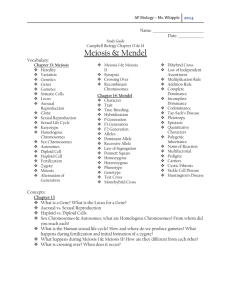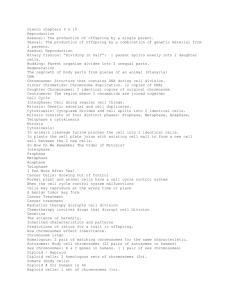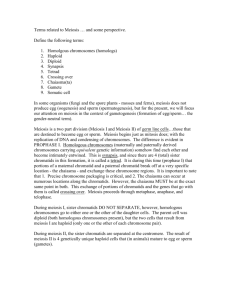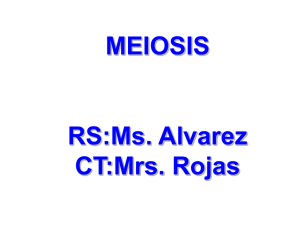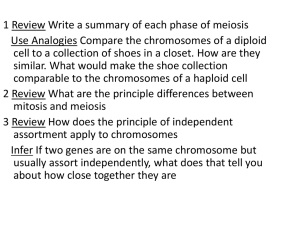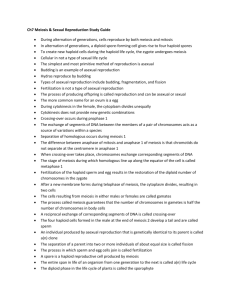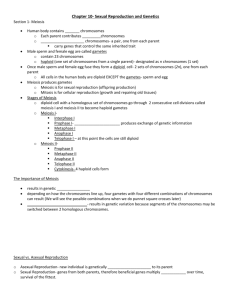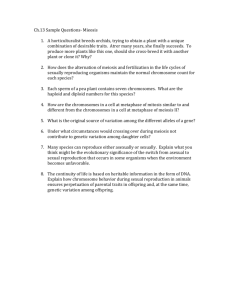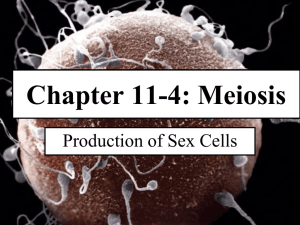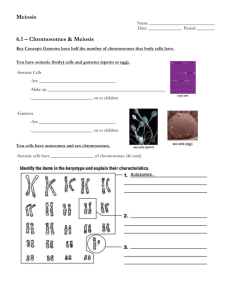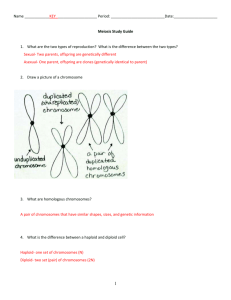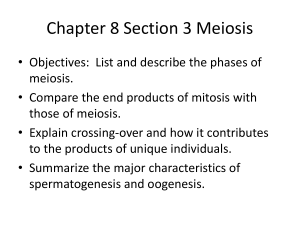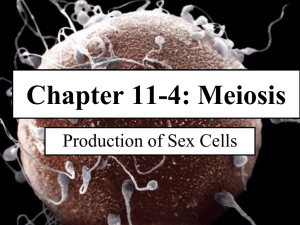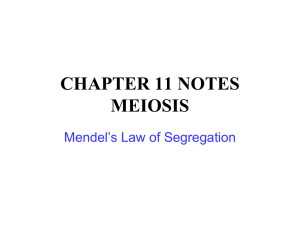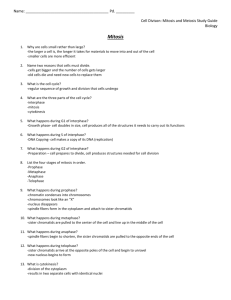3.3 Meiosis
advertisement
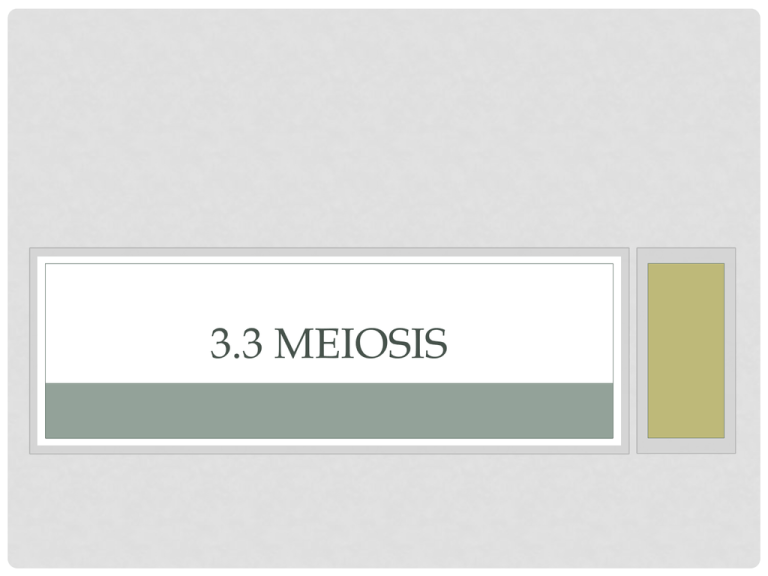
3.3 MEIOSIS DISCOVERY OF MEIOSIS Discovered by microscope observation around 1880’s. One species studied was Parascaris equorum aka horse threadworm. REVIEW • A diploid human cell has 46 chromosomes. These are arranged as 23 pairs of chromosomes – homologous chromosomes • The pair are not identical. Homologous means similar not identical. One from father, one from mother. • n – number of unique chromosomes in an organism • Eukaryotes have n pairs of chromosomes = 2n per cell • Haploid cells = n • Diploid cells = 2n • This is shorthand for writing the number of chromosomes in a haploid or diploid cell. MEIOSIS • A diploid nucleus divides producing four haploid nuclei • Divided into meiosis I and meiosis II • Meiosis I results in two haploid cells • Meiosis II results in four haploid cells • During prophase I, the chromosomes have doubled (2n chromosomes). • No replication after telophase I, nucleus has double chromatids but one chromosome of each type. CROSSING OVER • Occurs during meiosis I • Exchange of genetic material between bivalents • Chromatids are a new combination of genes • See pg. 86 in orange textbook. • http://highered.mheducation.com/sites/007249585 5/student_view0/chapter28/animation__how_meios is_works.html TASK • You must be able to recognise and draw diagrams to represent the stages of meiosis. These are very similar to mitosis, but with a few important differences. 1. Crossing over during prophase I 2. Random orientation during metaphase I 3. Separation of chromatids in meiosis II Notes/diagrams on pg. 164/65 will help you to do this.






